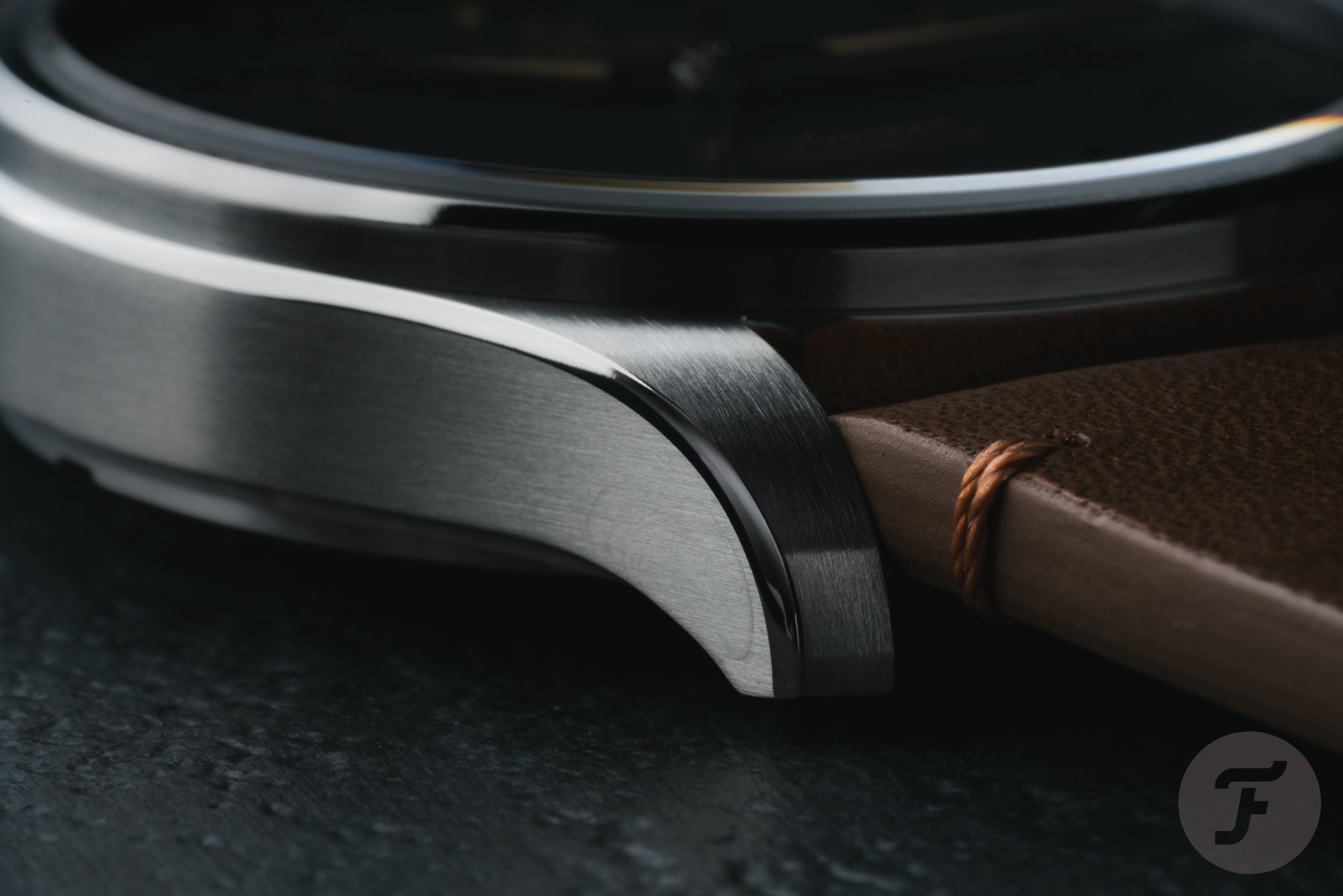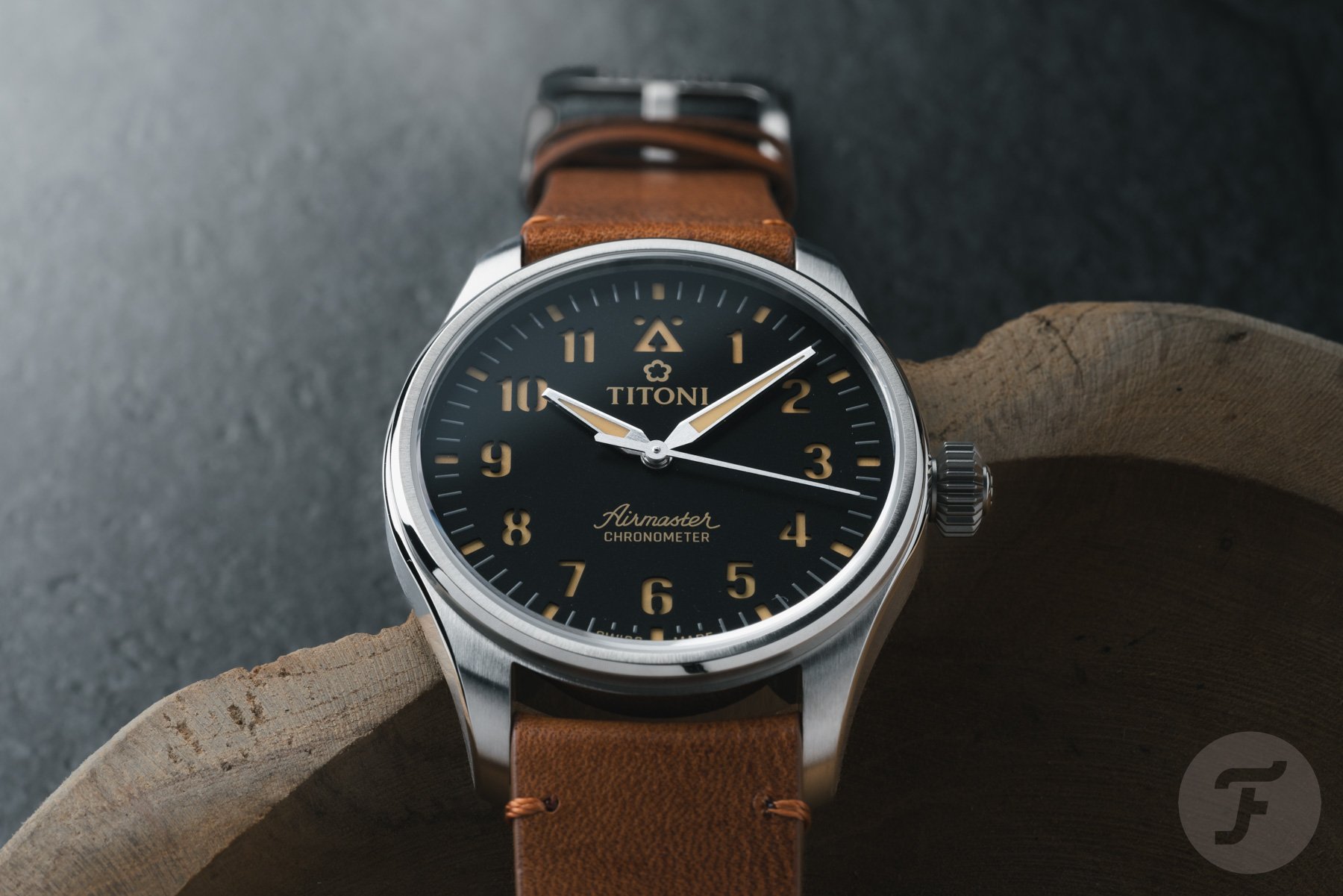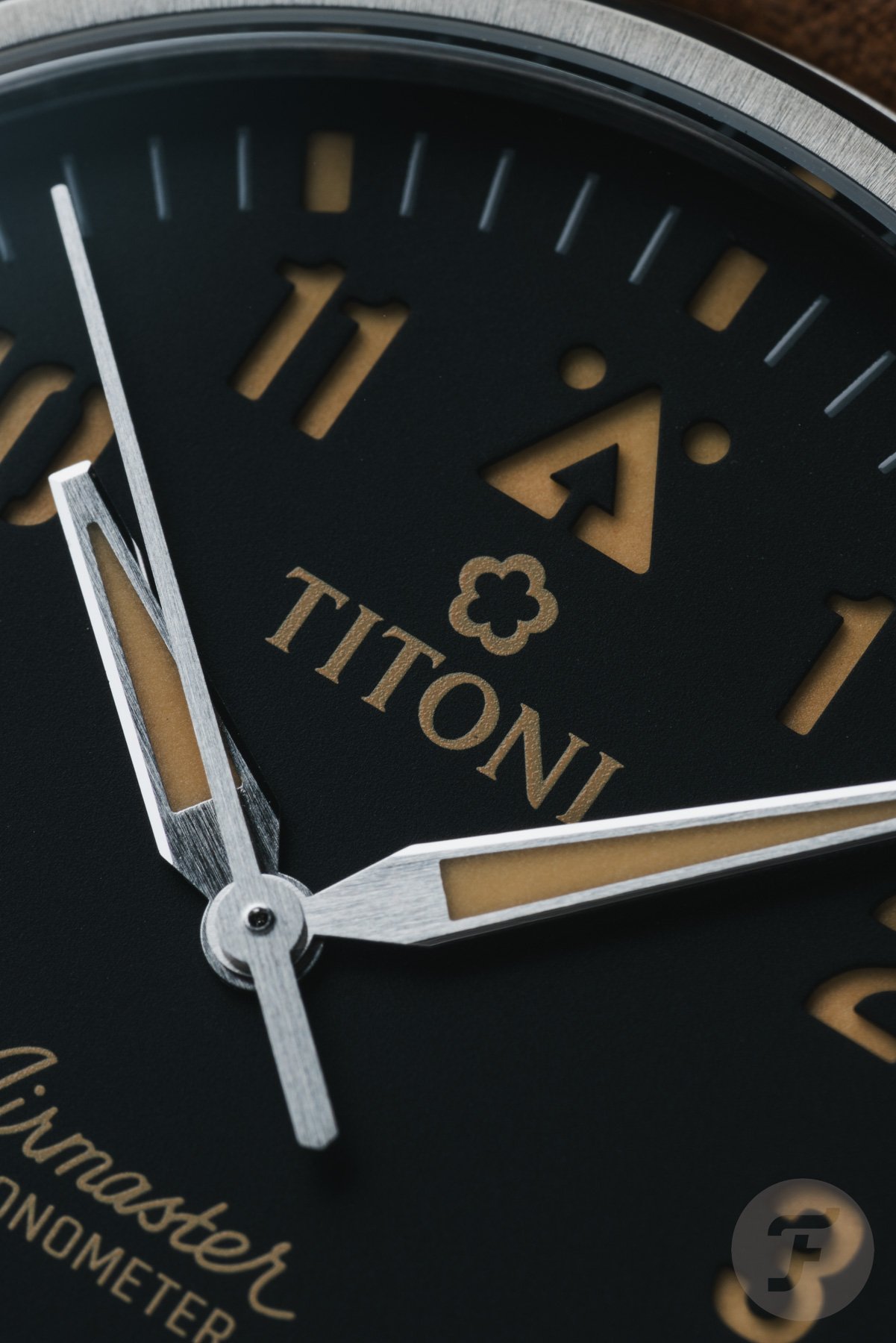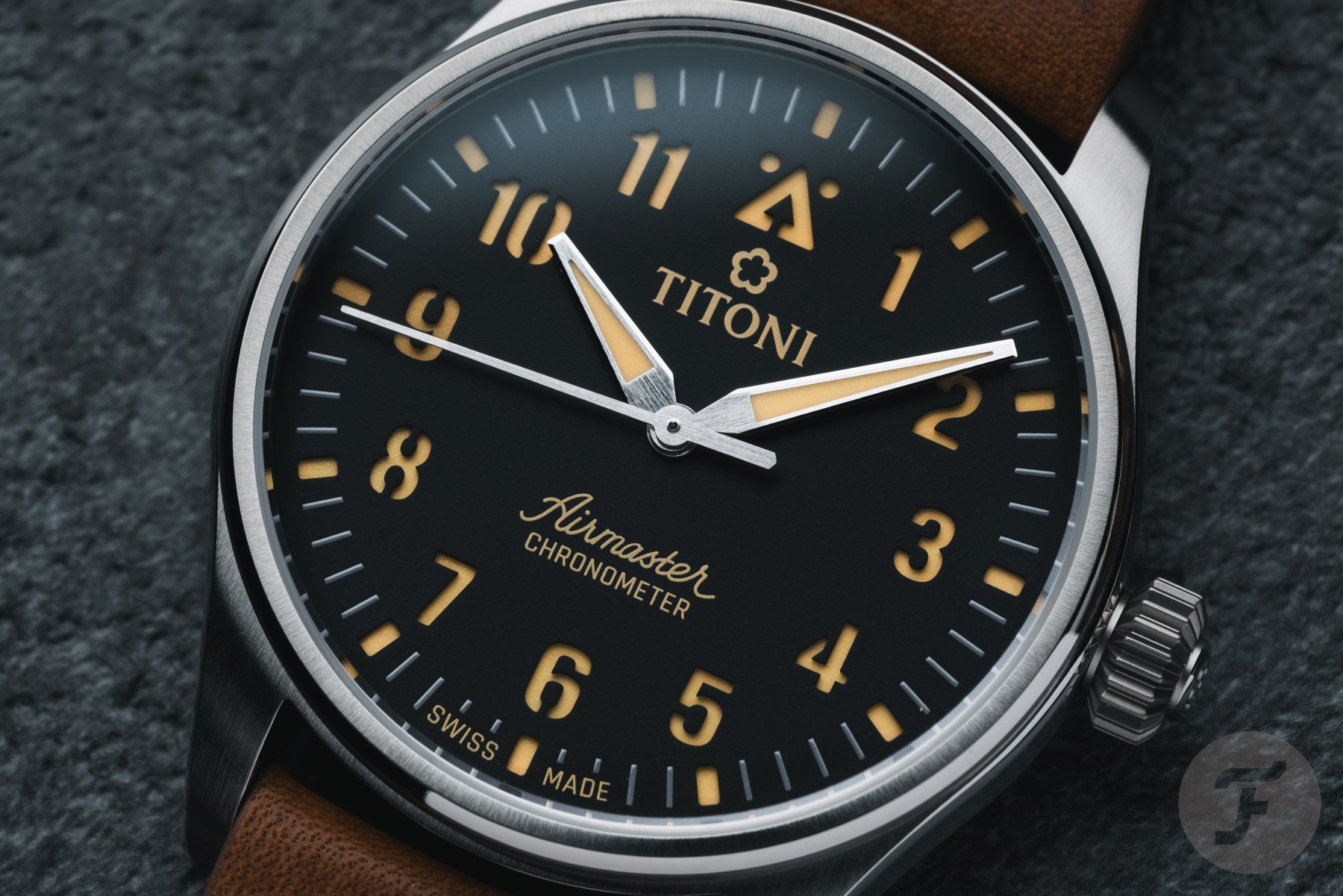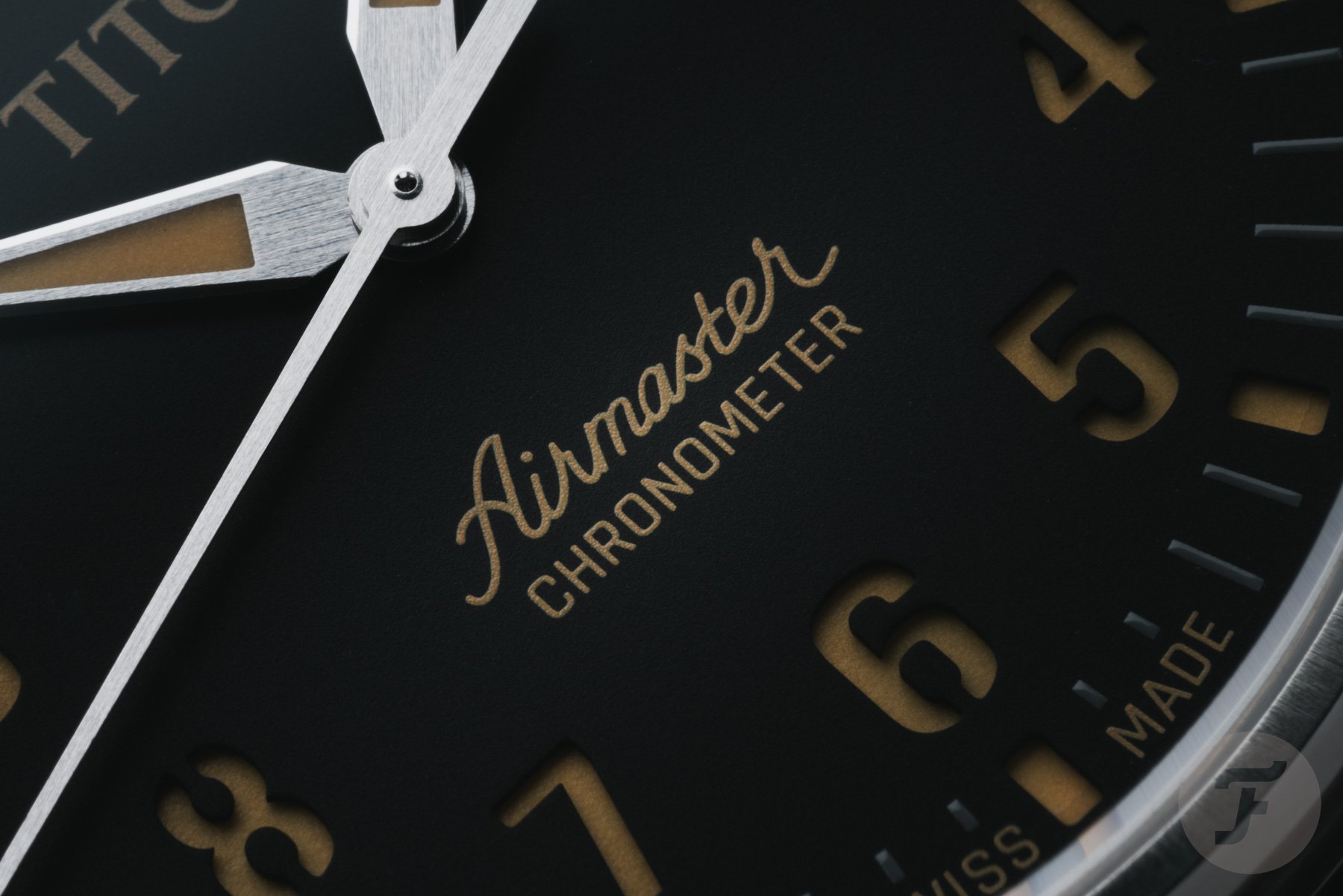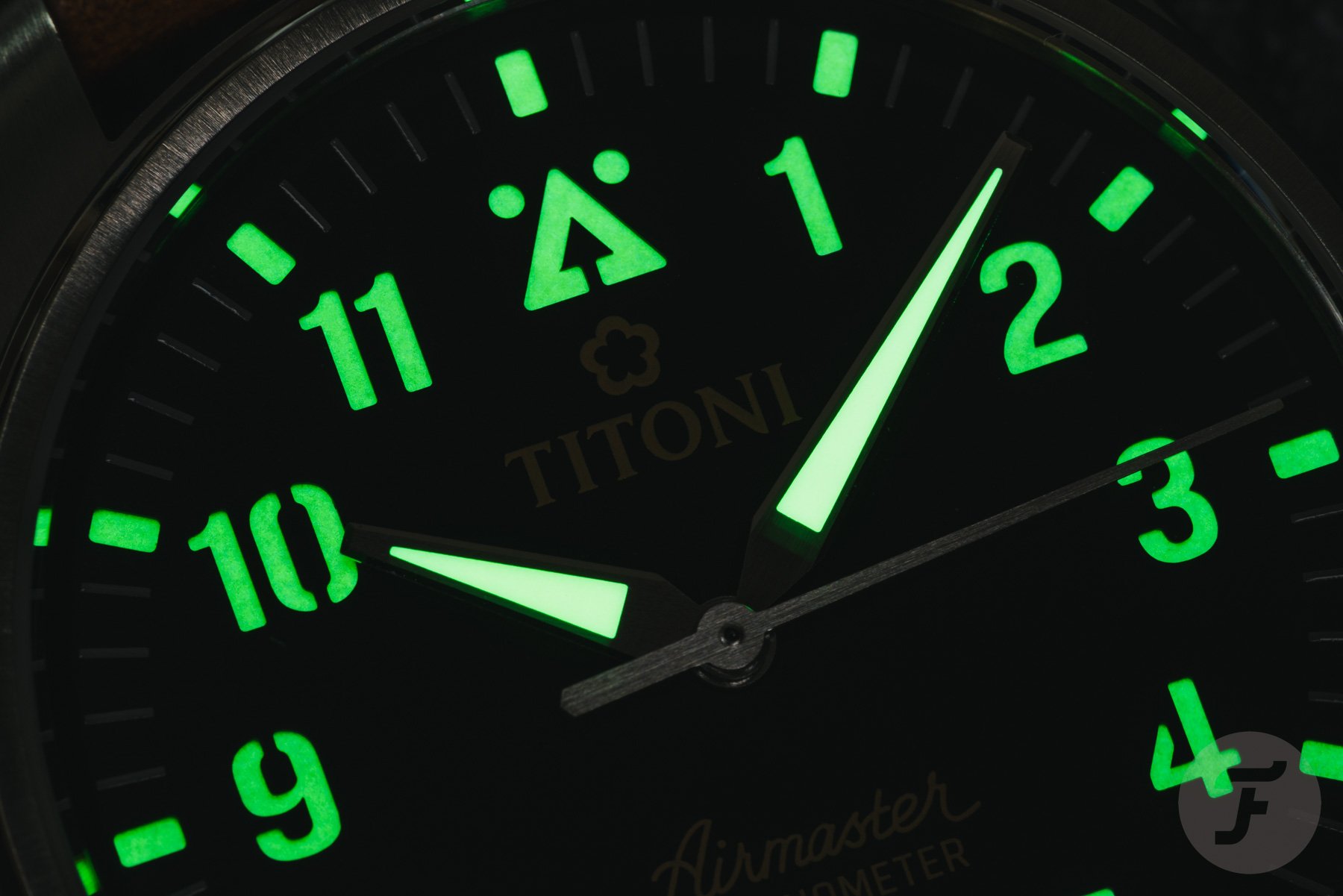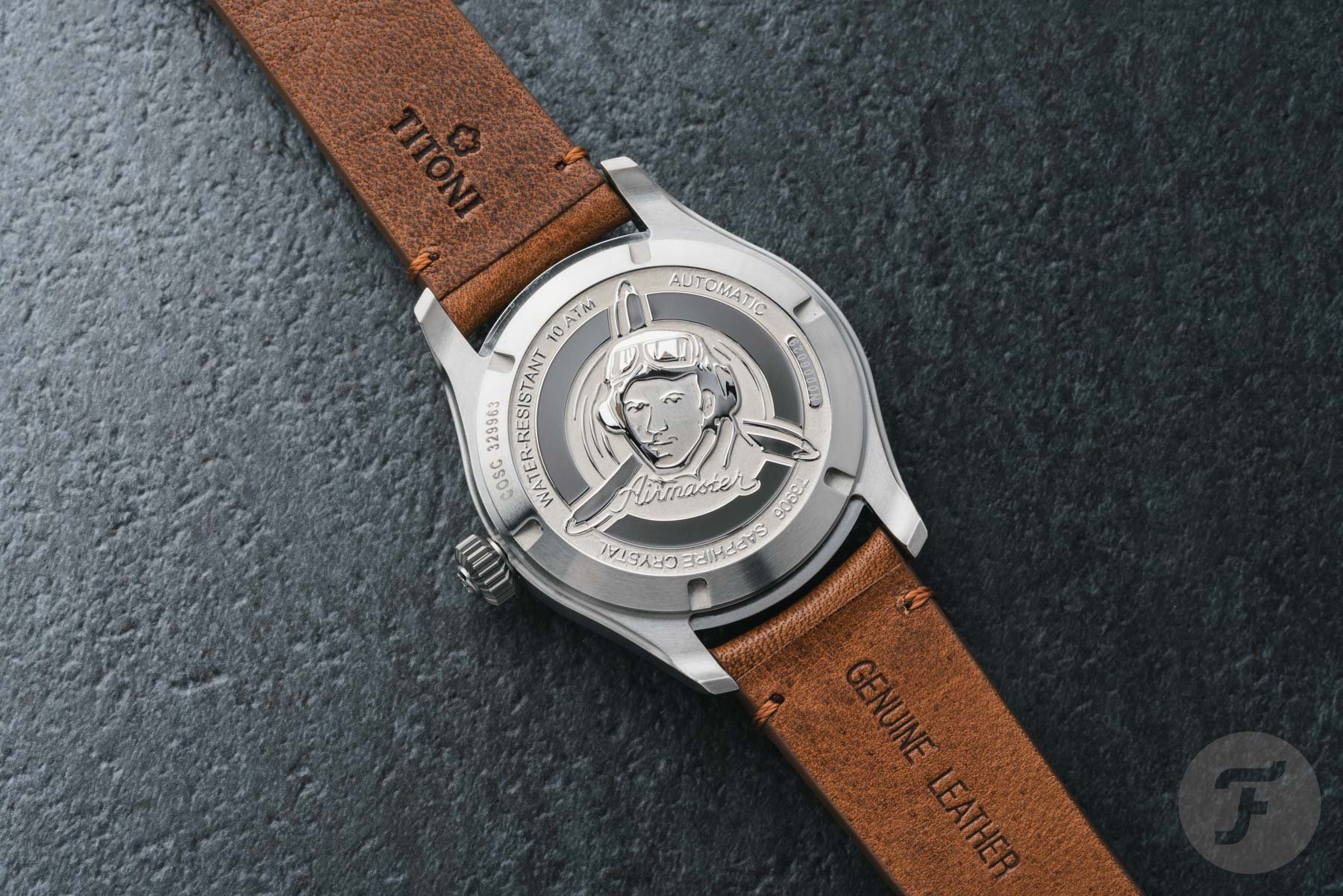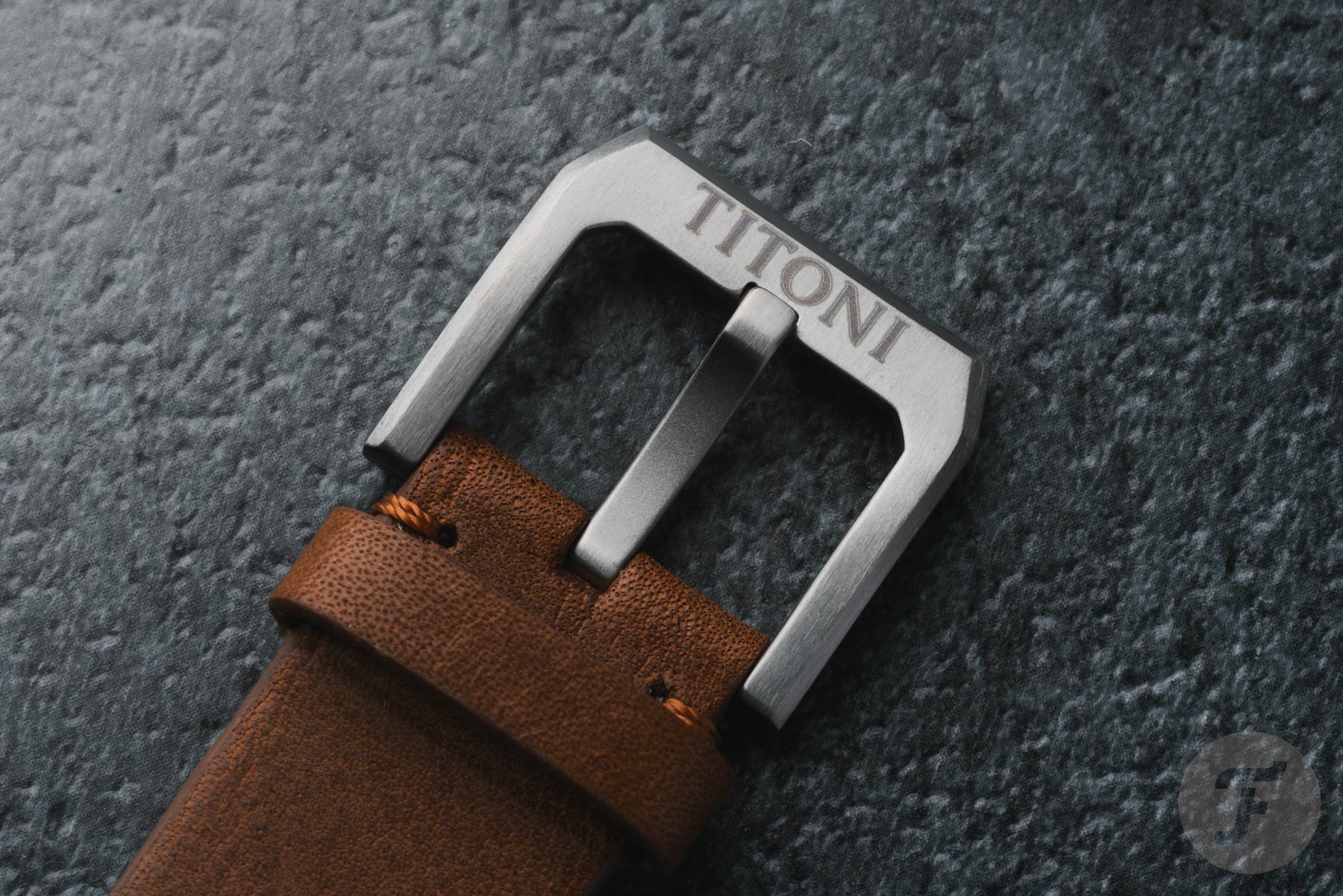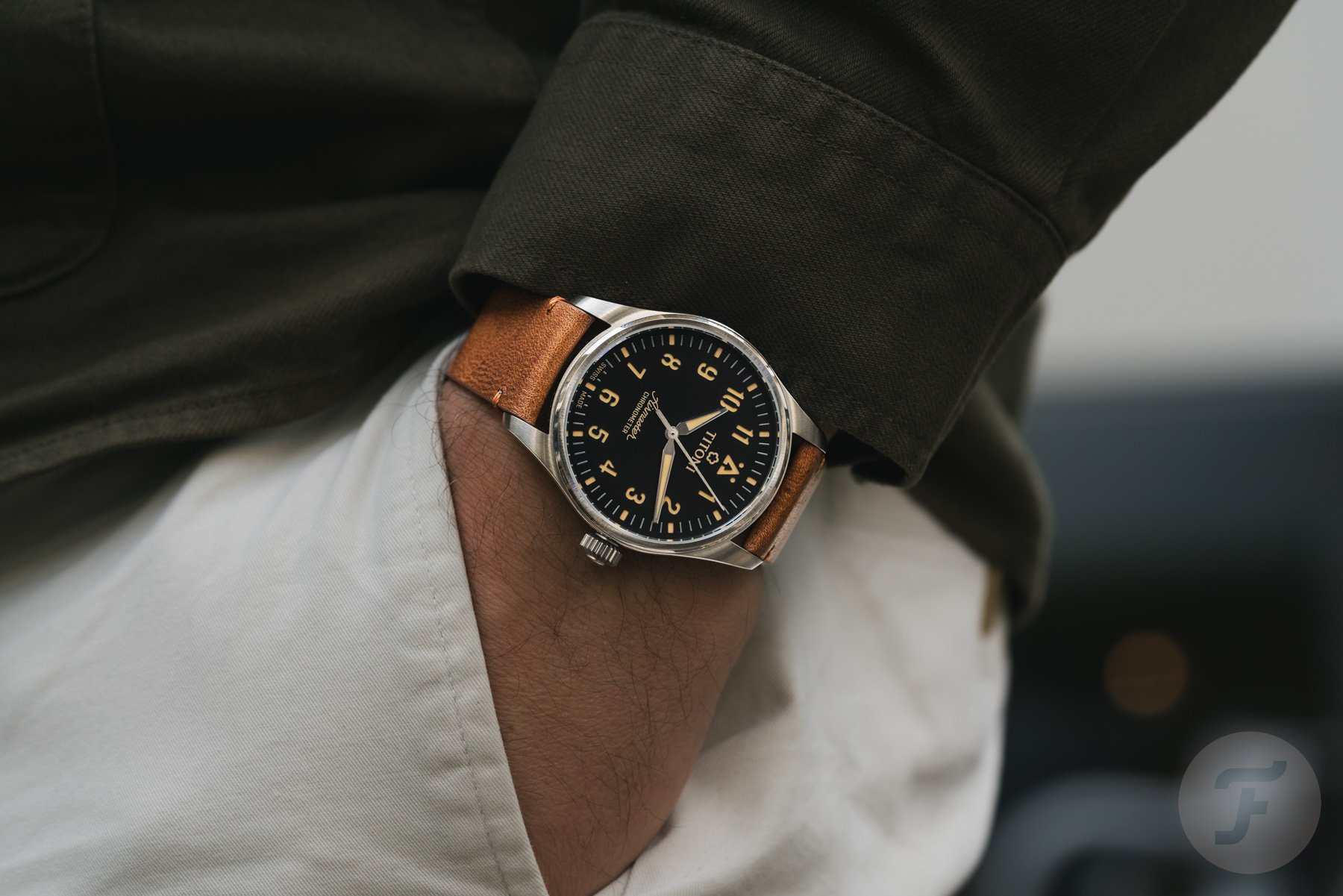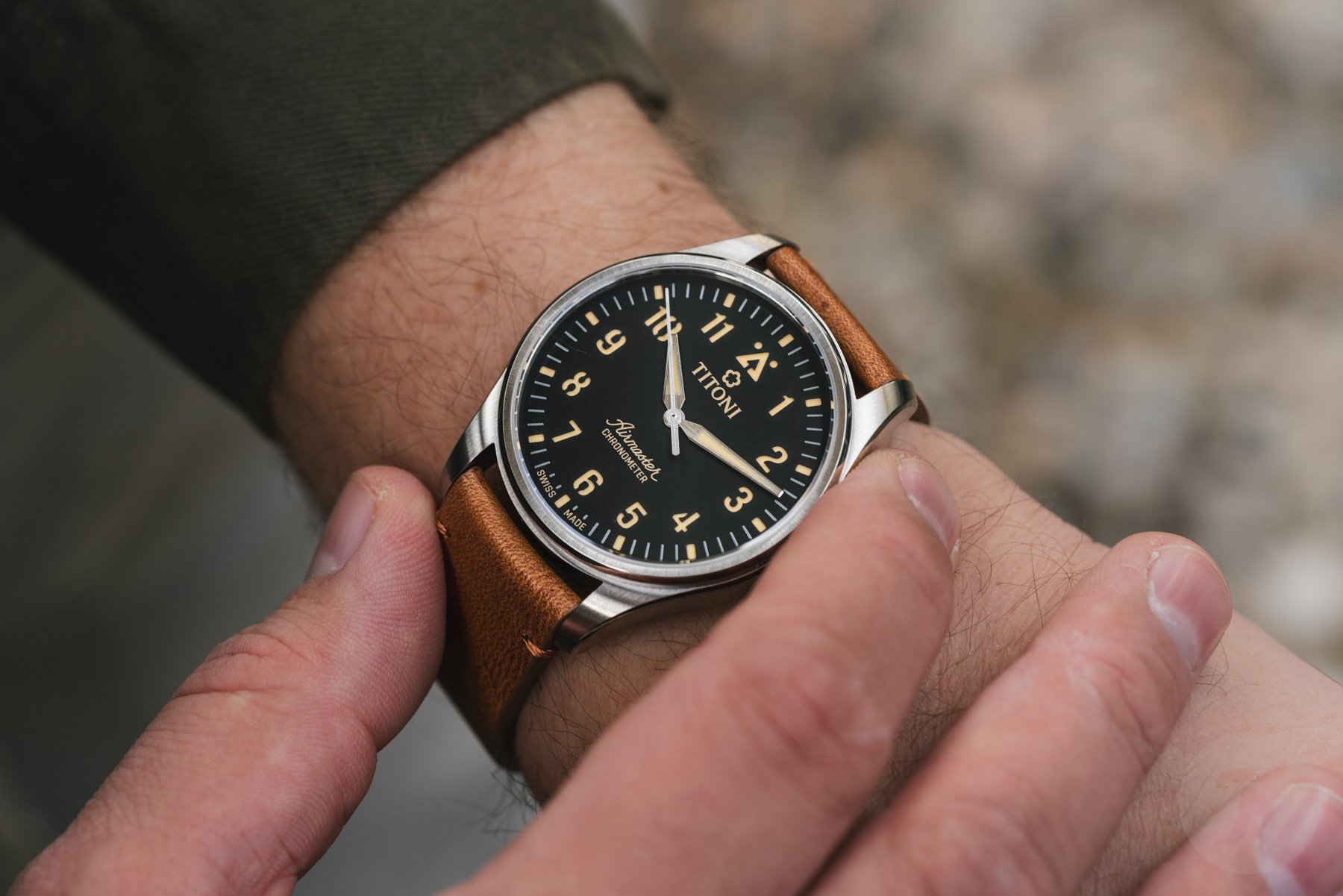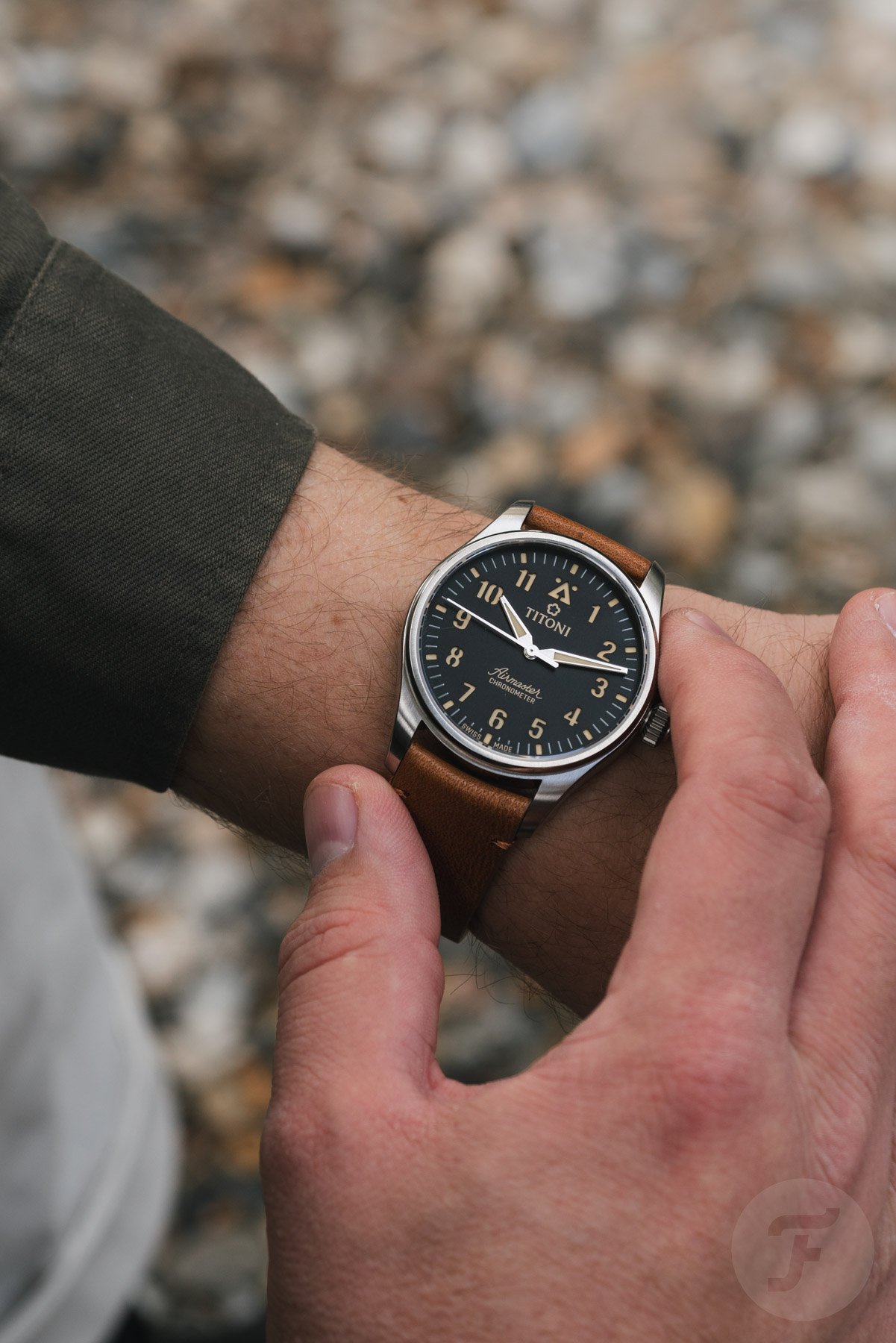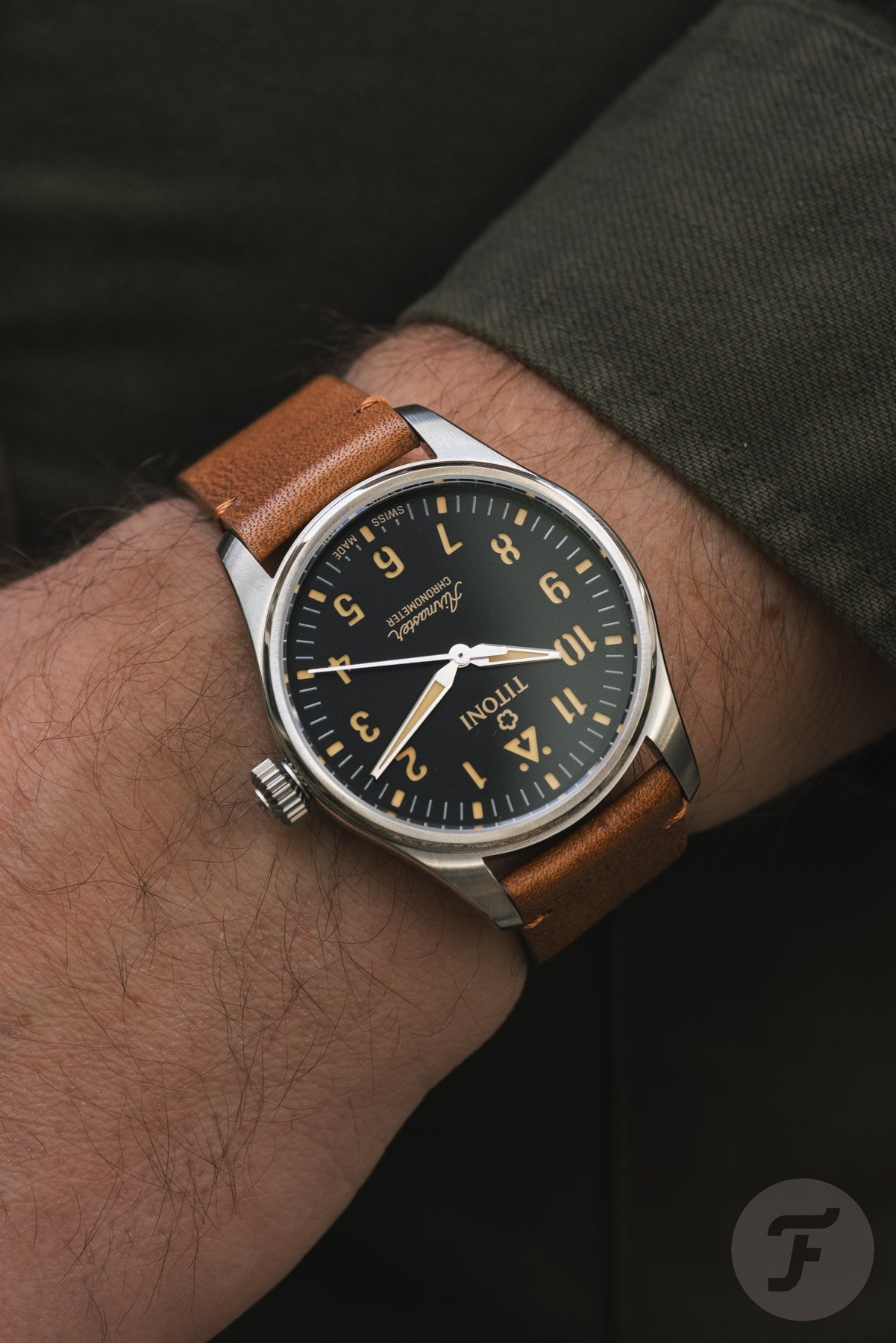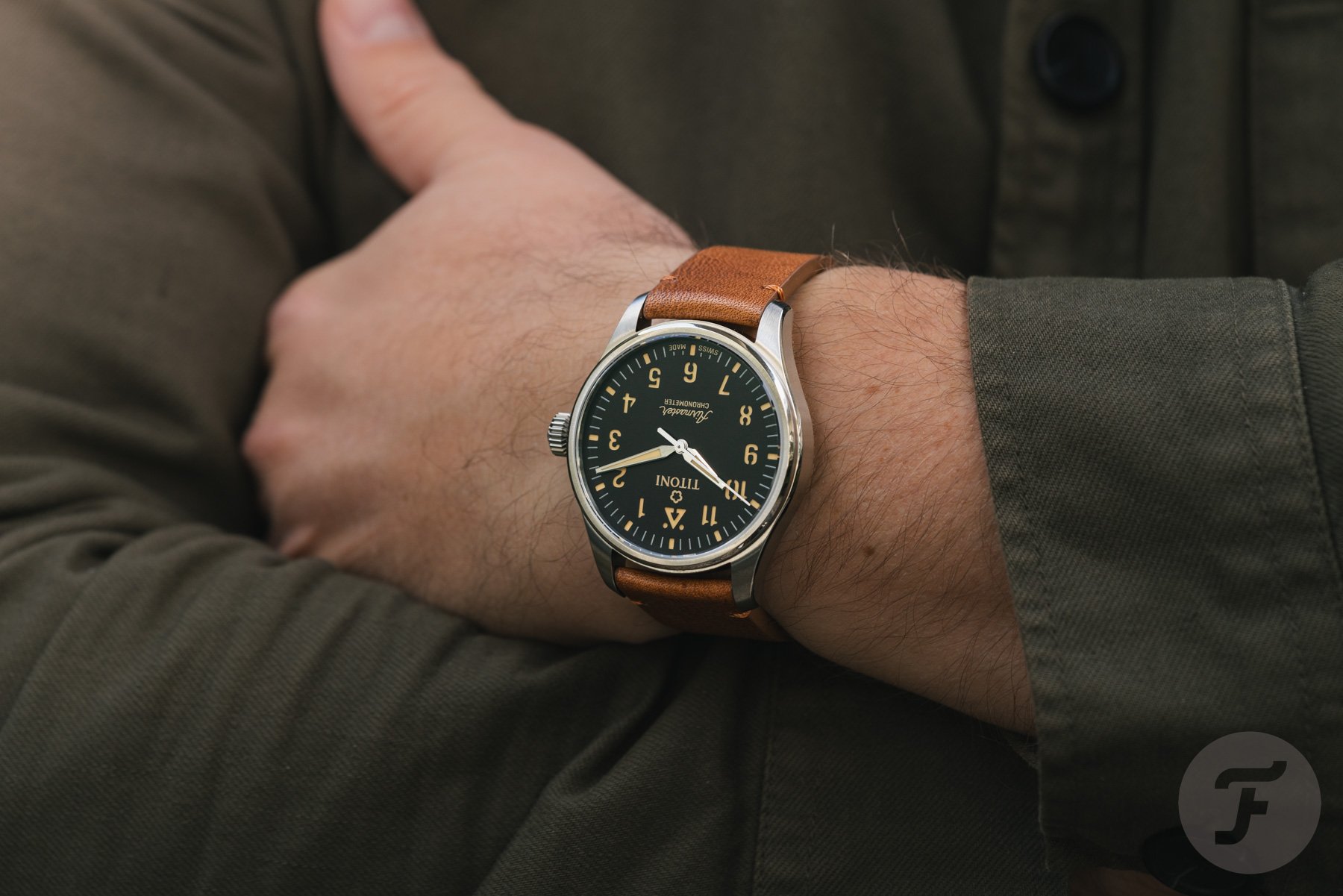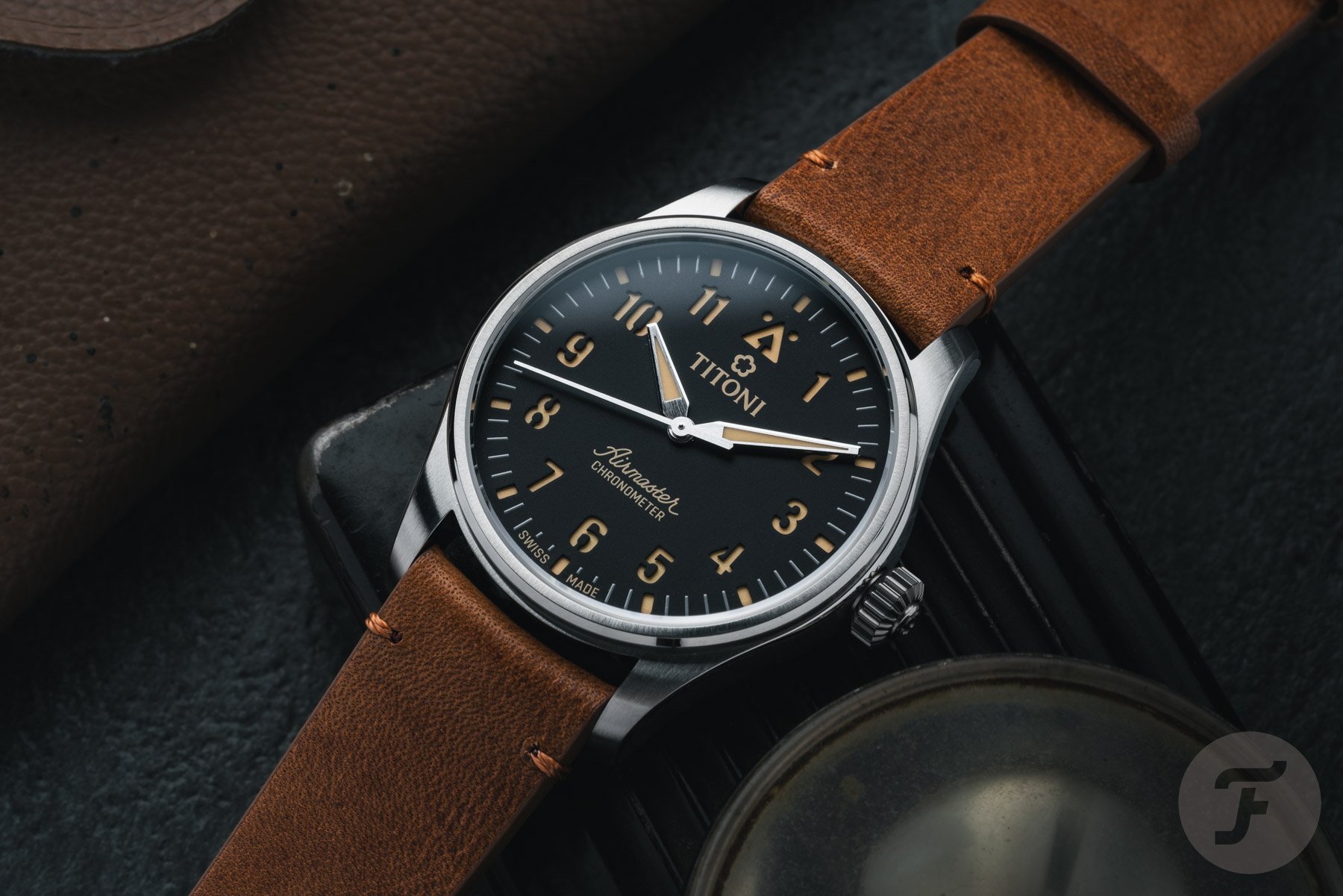Hands-On With The Vintage-Inspired Titoni Airmaster Pilot
It is no secret that I greatly appreciate Titoni’s efforts to create great watches at affordable prices. The brand has surprised me multiple times with its creations. In particular, the Seascoper line is a big personal favorite. But Titoni has plenty more to offer with a varied collection of watches. Another important line is the Airmaster series. These watches are elegant and classically styled timepieces predominantly on bracelets. With the newest addition to the lineup, Titoni has created a true Airmaster that embodies the name perfectly. This classic pilot’s watch might be the best Airmaster yet, and it has some surprising details in store.
At first glance, the new Airmaster Pilot looks like a classic 1940s pilot’s watch as we know from the likes of Laco, Stowa, and, of course, IWC. Most people, including me, will reference the IWC Big Pilot. But a closer look reveals some details that set it apart from similar watches from all the brands I just mentioned. Some of them are nice and surprising, and some of them are an acquired taste.
The specs of the Titoni Airmaster Pilot
First, let’s go over the details. The Titoni Airmaster Pilot features a 43mm Grade 5 titanium case with a 13.1mm thickness, a 53mm lug-to-lug, and a 100m water resistance rating. I like the fact that it’s not any bigger because that makes it very wearable. The case and bezel have a brushed finish with contrasting polished bevels.
This case also has the classic round pilot’s watch shape with nicely curved lugs to ensure the substantial size fits the wrist comfortably. In a nod to tradition, it also features a fairly big crown. However, I must specify that the push/pull crown is “only” a little less than 8mm in diameter, so it’s not necessarily oversized.
The case is paired with a black sandwich dial, which is a nice surprise. The lower layer is a nice vintage yellow lume color that is almost amber. It references aged lume but, practically speaking, surpasses the aged feel and becomes a color of its own.
The upper dial is matte black and features cutouts for the hour numerals and five-minute markers as well as the traditional triangle with two dots at 12 o’clock. The remaining minute markers are executed in a nice light gray that fits the overall aesthetic very nicely.
The details of the Airmaster Pilot’s dial
Hovering above the dial are two brushed stainless steel modified alpha-style hands. These hands, of course, have a filling of lume that perfectly matches the lower luminous dial. What I love about the hands is that they are cut off at the end. Whereas traditional hands on a pilot’s watch have sharp, pointed tips, these look distinctly more refined. The central seconds hand is a thin, straightforward needle type that completes the handset nicely.
Looking at the text on the dial, two things stand out immediately. The logo on the upper half of the dial is large — a bit too large for my liking. Because of its placement close to the triangle, the two elements fight slightly for attention. If the logo had been slightly smaller, it would have benefitted the design’s overall balance.
The lower half features the “Airmaster” wordmark used for most of the models in the series. I am not the biggest fan of this cursive font because it is a bit too frivolous for my taste. On a dial that is otherwise rather serious and functional, it feels a little out of place, especially if you compare it to the “Chronometer” text underneath. However, I must confess that I got used to it quickly.
Lastly, the green-glowing lume is extremely bright, making it a joy to see the dial in the dark. Besides that, it makes it easy to read the time in low-light conditions.
The chronometer-certified Sellita SW200-1
If you turn the watch around, you will be greeted by the remarkable case back. It depicts a pilot from the old days with a propeller behind him. There is an impressive 3D feel to it. But I am not the biggest fan of the style and amount of space it takes up. I would have loved to see something a bit easier on the eye that fits the utilitarian feel of a pilot’s watch a bit better.
Hiding behind the case back is a Sellita SW200-1. This dateless version of the movement operates at 28,800vph, has 26 jewels, and offers 41 hours of power reserve. It’s also a COSC-certified chronometer, offering an accuracy of -4/+6 seconds per day, making it a great workhorse movement for this Airmaster Pilot. Lastly, the watch comes fitted with a thick cognac-colored leather strap featuring a large stainless steel buckle signed with the brand’s name.
Wearing the Titoni Airmaster Pilot
That brings us to what it’s like to wear this watch. As you will understand, the sturdy leather strap takes some breaking in. It is good quality, though, and after wearing the watch for a bit, it became a bit more supple and shaped itself around my wrist. What I also love about the strap is that the holes are square and close together. It ensures that you can make the watch fit your wrist perfectly, which is not a luxury. Because it is a big watch, the strap must fit nicely to balance it on the wrist. But thanks to the sizing options, it does just that.
As you would expect from a big watch like this, it has plenty of wrist presence. The combination of matte black, the old yellow color on the dial and hands, and the cognac-colored strap looks wonderful. In addition, the different finishes on the case give the watch some extra visual brilliance.
In all honesty, a classic pilot’s watch is not something I would chase for my collection. While I greatly appreciate the history and the functional aspects of the design, it usually lacks the refinement I love to see on a dial. But this Titoni Airmaster Pilot shows that small changes, such as the sandwich dial, can make a huge difference. I also prefer the hands of the Airmaster Pilot over those of many of its contemporaries. And as we know from Titoni, the overall quality is quite impressive.
Final thoughts on the Titoni Airmaster Pilot
This new Titoni Airmaster Pilot has a lot going for it. I love what the brand has come up with while staying within the aesthetic framework of a traditional pilot’s watch. Taking a step away from the traditional black-and-white dial, using a sandwich dial, and using slightly different hands make this an interesting take on the genre. These little details give the watch character. On top of that, the Airmaster Pilot wears very well for such a substantial watch.
I would have loved to see some details executed differently, though. The most obvious is the font used for the “Airmaster” wordmark. Unfortunately, the case back isn’t up my alley either. While you won’t see a lot of it, it’s a detail that still plays a relevant part in the watch’s overall look.
Having said that, these are two remarks based on personal taste. If you like these two elements or are not bothered by them, this new Titoni Airmaster Pilot could be a great pick at €1,840 / US$2,300. This model properly celebrates the classic 1940s pilot’s watch. Add the tremendous quality, and I must compliment Titoni for another job well done.
But what are your thoughts on this new Titoni Airmaster Pilot? Let us know in the comments.
This is a partnership post. Read about our transparency here.


